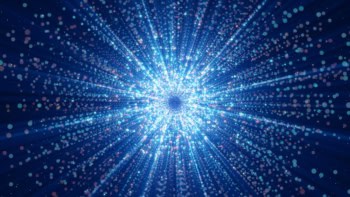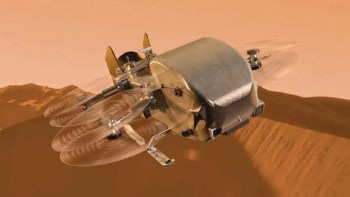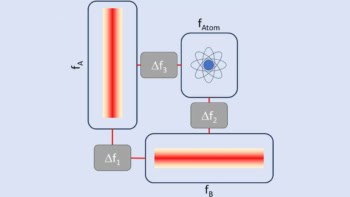Physicists in Japan have built the world’s first underground gravitational-wave detector. Preliminary tests have shown that the reduced environmental noise in the underground site means that LISM – Laser Interferometer gravitational-wave Small observatory in a Mine -- can perform as well as existing instruments (S Sato et al. 2004 arXiv.org/abs/gr-qc/0403080). The detector has been built 1000 metres below ground in the same site as the SuperKamiokande neutrino detector.
Gravitational waves are ripples in the fabric of space-time that are produced when massive bodies accelerate through space. However, the waves are very weak – even for events as extreme as supernova explosions or collisions between neutron stars and black holes – and are therefore extremely difficult to detect.
Gravitational-wave interferometers are designed to detect these very weak waves by using lasers to monitor the movement of test masses placed at the ends of the perpendicular arms of the interferometer. The arms in LISM are only 20 metres long, which is relatively short compared with the 3 kilometre arms of the VIRGO detector in Italy, and the 4 kilometre arms of the two LIGO detectors in the US.
When a gravitational wave passes through the detector, it causes the distance between the test masses to increase in one direction and decrease in the other. However, the changes caused by any gravitational wave are extremely small – only about 10-21m – so the detector must be very sensitive. But extremely sensitive detectors are easily disturbed by environmental noise – such as seismic motion and temperature variations – in its surroundings.
Now, Shuichi Sato and colleagues at the LISM collaboration have tried to overcome this problem by going underground. Preliminary tests show that, despite its short arms, LISM has a displacement sensitivity comparable to that of the TAMA detector in Japan and GEO600 experiment in Germany.
The collaboration now plans to build another detector, which will contain cryogenic instrumentation to reduce thermal noise effects (T Uchiyama et al. 2004 Class. Quantum Grav. 21 S1161). This new machine will be sensitive enough to compete with LIGO-II – the upgraded version of the US detectors. “If this project is approved by the [Japanese] government, it will be part of an international network of gravitational-wave detectors that will open new eyes on the universe,” Sato told PhysicsWeb.



